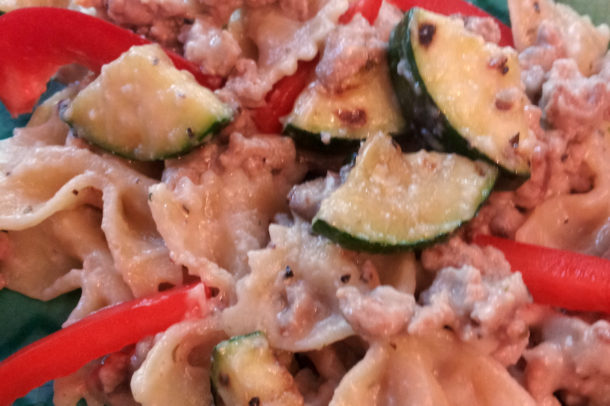As if the kidney diet isn’t already complicated enough, there is a new food additive to watch for and avoid (for those on a restricted potassium diet). I’ve written a fair amount about phosphate food additives which should be avoided by everyone who has or is at risk for chronic kidney disease. But there’s a new additive that has been approved by Health Canada for use in meat and meat products. It’s called potassium lactate and it is a serious concern for kidney patients. And there is currently no requirement for food companies to disclose how much potassium is in a product.
Historically, meat hasn’t been on our radar when looking at a potassium restriction but that is about to change. This new preservative can triple the potassium content of deli meat! Three slices of oven roasted turkey breast (which should only contain about 200mg of potassium naturally) now rings in at 730mg!!! This is especially challenging for patients who are trying to follow a high protein diet!
In fact, Health Canada estimates that “the additional dietary intake of potassium per person on a daily basis would be up to 2471mg potassium per day”. This could exceed the daily potassium requirements for many individuals on a potassium restriction.
The Kidney Foundation is advocating for mandatory labelling of key nutrients, potassium and phosphorus, to allow those with kidney disease to make informed choices about their food, nutrition and health.
Visit this page on our website and follow the link to have your say about which nutrients should be on a food label!
Looking for a great low potassium, low phosphorus, low sodium recipe? Check this one out, compliments of Alisha Groot-Nibbelink, a nutrition student from London Ontario:
Turkey Bowtie Pasta (4 portions)
For the pasta:
4 cups cooked bowtie pasta
1 lb ground turkey
1 cup cubed zucchini
1 cup raw mushrooms
1 red pepper sliced
Black pepper to taste
For the sauce:
5 tbsp margarine
1 tsp garlic powder
4 tbsp white flour
2 cups hot water
4 tbsp sour cream
1 tsp lemon juice
¼ tsp ground red pepper flakes
1 tsp Mrs. Dash
Direction for the sauce: Melt the margarine in a small saucepan on medium heat. Add the flour while continuously stirring. Immediately add some hot water, and then slowly add the rest of the hot water as the mixture thickens. Add the sour cream and stir well to mix. Add the lemon juice, ground red pepper flakes, Mrs. Dash, and garlic powder and stir continually for 1-3 minutes. Remove from heat and continue to stir as the sauce cools (2 minutes).
Direction for the pasta: Boil water without salt, then add bowtie pasta and cook according to package directions. Thoroughly cook the ground turkey in a pan (internal temperature of 74 C). In a large pan, sauté the zucchini and mushrooms until soft. Add the sliced pepper to warm, but not soften them. Add the sauce, ground turkey and pasta to the vegetables and stir well. Add black pepper to taste and serve.

The recipe sounds very good, but raises questions for me. Often I’ve made something based on the idea that a vegetable was fairly low in Potassium and then later read from another source that it’s high. I had to switch vegetables in the middle of cooking dinner one night because I looked up zucchini after I started cooking. Also, I’ve always been under the impression mushrooms were really good sources of potassium. Sorry, I’m just frustrated because I’m trying to help my husband comply and feel like I get inconsistent directrion.
I have recently being diagnosed with kidney disorder and I have to be on a low potassium, low sodium diet and I am also diabetic. This becomes complicated. I am not sure which vegetables are to be eaten raw versus cooked ones. Help!!!
Hi Chantal,
It can be confusing to learn what foods are high in potassium especially at the beginning. Have you looked at our factsheets on potassium? It may help.
I’ll try to clarify the raw vs cooked potassium content of foods.
When you cook 1/2 cup of spinach in a frying pan it reduces to about 1 tablespoon, right? But the amount of potassium in the spinach remains the same. So 1/2 cup cooked spinach will have a lot more potassium than 1/2 cup raw spinach simply because there is actually a lot more spinach in the same 1/2 cup. Its the same when you cook mushrooms or other leafy greens. Did the explanation help?